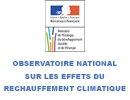Taking into Account Levels of Ozone and its Precursors When Calculating the Contribution of Natural Areas to the Greenhouse Effect at the Regional Scale
Taking into Account Levels of Ozone and its Precursors When Calculating the Contribution of Natural Areas to the Greenhouse Effect at the Regional Scale
When calculating the contribution of agricultural zones to the greenhouse effect, the only factors that have been considered to date have basically been CO2 emissions by farm machinery, N2O emissions from farmland and CH4 emissions from ruminants. We are now proposing to go a stage further by including ozone directly in calculations of the greenhouse gas footprint of crop farming. Agricultural systems contribute to ozone concentrations via two contradictory routes: (1) ozone deposits on the vegetation and (2) production of ozone precursors (NO by farmland and biogenic VOCs by plants) and at present the quantities of these emissions are very poorly defined.
The aim of the GESBIO3 project is to assess the contribution of agricultural and forest ecosystems to radiative forcing linked with the troposheric ozone layer. Concentrating on this area is justified by the fact that quantitatively speaking, these ecosystems play a particularly significant part in ozone flows and concentrations, and the fact that uncertainty as to levels of deposits and precursors is particularly high. More generally, the project will also contribute information to the issue of including ozone in radiative forcing calculations, which the IPCC is specifically looking at. The project complements other projects that have been carried out on the carbon footprint of forest and farm ecosystems and N2O and NOx emissions from farmland.
To assess the radiative forcing caused by ozone and the contribution of agricultural and forest ecosystems, a Chemistry-Transport model will need to be used, as ozone has a short lifespan and ozone fields vary considerably on a regional scale. The project will be based principally on the CHIMERE model, but also on MésoNH-C, and in these models, we will continue the work of improving land-vegetation-atmosphere interactions (GHG and precursor emissions and deposits). The authors have extracted the contribution by natural surfaces by using various different scenarios which include or exclude biogenic sources and sinks, whilst evaluating uncertainty levels in these estimations.
As ozone is a pollutant that is typically found in the vicinity of urban areas, the study zone used was the extended area around Paris (the Ile de France region and parts of neighbouring regions).
This modelling work was supplemented by experiments (monitoring flows of ozone and precursor gases and CO2 and N2O in different ecosystems) aimed at improving parameterisation of biogenic sources and sinks in Chemistry-Transport models, and at defining model output checkpoints. Time series of CO2, H2O, O3, N2O and NOx flows will be measured in the major ecosystems representing natural zones: crops, meadows and forests. The sites chosen have already been equipped and are being monitored in the context of other projects (CarboEurope, BioPollAtm, GICC-NOx, ORE PCBB and Forêt).
There will be four arms to the research:
- Arm 1: measuring flows of greenhouse gases (CO2, N2O, ozone) and precursor gases (NO/NO2) in different agricultural and forest ecosystems
- Arm 2: improving the way in which ozone emissions and deposits in natural zones are taken into account in Chemistry-Transport models
- Arm 3: assessing the sensitivity of ozone quantities produced and their spatial variability to sources and sinks in agricultural and forest zones
- Arm 4: estimating the contribution of agricultural and forest zones to the greenhouse effect in a peri-urban area.
The project provided the basis for taking ozone into account in calculating radiative forcing. It was possible to assess ozone-related forcing caused by the agriculture and forestry sector and to compare it with effects due to other greenhouse gases (CO2, N2O). A similar initiative could be undertaken for other fields of activity (transport, industry, domestic). It should be possible to transpose the information acquired from the GESBIO3 project to global models (LMD-Z or others) in order to perform a calculation which will be more thorough as there is more reason to do it at that scale.
| Coordinators |
Pierre CELLIER, INRA – Environnement et Grandes Cultures (EGC) |
| Partnership |
INRA – BioMCo |
| Funding |
MEDD
|
| Budget |
40 000€ (including tax)
|




